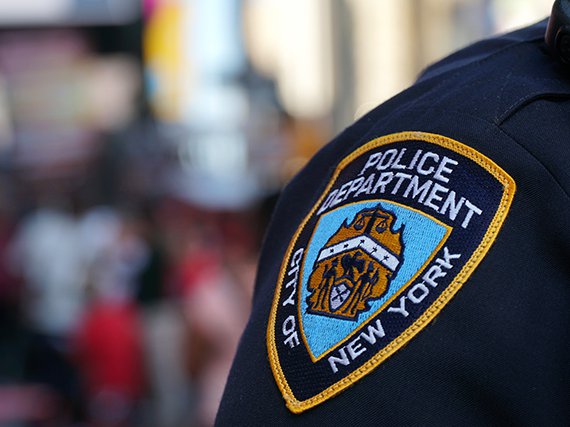Brooklyn ATM Scam Nets $10,000 After Four Fake-Check Heists, NYPD Seeks Tips

The ingenuity of small-time fraudsters is colliding with New York’s banking vulnerabilities, raising questions about public trust and crime prevention alike.
On four sunny afternoons this summer, as New Yorkers bustled between subway grates and coffee carts, an altogether humbler heist was underway inside Brooklyn’s banks. There, police allege, a lone man orchestrated a low-tech but effective confidence scheme, leaving behind unremarkable receipts and a total loss approaching $10,000—a paltry sum by Wall Street standards, but significant enough to vex the NYPD’s fraud unit and stir local anxieties.
The suspect’s modus operandi was as old as banking itself, but dressed in contemporary garb. According to police reports, the man—yet unnamed—approached individuals at ATMs in a series of Brooklyn branches, including Chase on Fulton Street, Citibank on Kings Highway, and TD Bank on Court Street, each time persuading his mark to deposit a check in exchange for cash on the spot. The checks, of course, were fraudulent; after the stranger vanished with the cash, bank systems caught up, leaving the good Samaritans in the red.
The first such incident occurred on June 22nd, with successive schemes on July 1st, July 22nd, and July 23rd—each targeting a different branch, each executed in daylight. No brute force was required, just a dash of charm and the universal lure of a quick favor. In all, police say, $9,520 was taken before the pattern drew the attention of Brooklyn’s precincts.
For New York City, this breed of deception is humdrum yet illustrative. Though unremarkable next to grand larcenies or elaborate cyber-heists, such schemes signal persistent vulnerabilities: the ubiquity of checks, the gaps in public financial awareness, and the ease with which social engineering can bypass both digital and physical security. If anything, the affair spotlights what local authorities call “confidence crime”—a phenomenon relying more on psychology than on high technology.
The risks extend beyond the immediate victims. According to the Urban Institute, financial scams cost Americans an estimated $5.8 billion in 2023, with cities bearing a disproportionate brunt. In New York, the nation’s financial nerve centre, even petty fraud has outsized ripple effects: it elevates policing costs, strains trust in banks, and reinforces a perennial sense of urban wariness. Meanwhile, each victim joins the throngs filing claims or contesting debits—further burdening customer service and, in time, nudging banks to tighten policies that inconvenience the honest along with the reckless.
There are deeper secondary effects. Incidents like the Brooklyn ATM scam quietly nudge institutions toward ever-stricter verification protocols—delays on check clearance, holds on deposited funds, heightened ID checks—all designed to chase away fraud but apt to ensnare the unwary customer as well. Ironically, such countermeasures often cluster in dense and diverse cities like New York, whose populations include millions underserved by traditional banking and thus all the more susceptible to quick-money ploys.
Politicians, meanwhile, find little use for such crimes as rallying cries. Compared with headline-grabbing violent offenses or multimillion-dollar racket busts, petty financial cons seldom make the mayoral priority list. Yet these incidents quietly sap economic confidence and breed a sense—sometimes justified, sometimes not—that New York’s ordinary citizen is left to fend for herself amid the city’s teeming complexity.
Such tactics are part of a larger trend, not just in Brooklyn but nationwide. The Federal Trade Commission’s 2024 report notes that “check fraud”—in all its forms—has seen a resurgence after a decade of decline. The culprits are often local, working solo or in loose groups, exploiting face-to-face trust in an era otherwise dominated by digital suspicion. In London or Los Angeles, local crime patterns bear a similar flavour: small sums, social proximity, just enough guile to circumvent an otherwise fractious system.
Unlike vast online identity theft rings, these scams remain physical and intimate, a throwback to grifter folklore. Yet the prevalence of such crimes challenges banks’ efforts to digitize away risk. ATMs, after all, remain a lifeline for millions, especially in cities where cash—despite the fintech boom—remains king for tips, food carts, and daily trade.
Fighting confidence crimes without punishing the public
The NYPD’s response has been methodical, if somewhat prosaic: fliers, public-service messages, and an appeal to vigilance. They urge New Yorkers to think twice before accommodating strangers at ATM vestibules—a motif all too familiar, but not without merit. Chase, Citibank and TD Bank insist their fraud-detection systems grow ever sharper; yet, as these incidents attest, no algorithm fully substitutes for a cautious customer base.
There is room, too, for modest optimism. Losses in these cases—though personally damaging—are capped by the criminal’s own small-time ambition. Unlike the depredations of rogue traders or sprawling cyber syndicates, the Brooklyn ATM scam’s footprint is mercifully contained; no pension funds collapsed, no hospital networks paralyzed. With luck—or, more likely, with better public education—the next would-be victim will think before cashing a favour.
Nonetheless, a metropolitan city that fancies itself the world’s financial capital ought not wink at such lapses. It falls to banks, schools, and civic groups to tug public awareness upward. That means clear signage, better training of front-line staff, early warning systems, and—dare we suggest—less reliance on the increasingly obsolete check. In the end, the most potent defense may come not from technology, but from an urban population equipped with an extra ounce of scepticism, both online and off.
For New Yorkers, the lessons pile up as inexorably as subway delays: treat strangers’ requests with nonchalance; deposit checks with care; assume, at least now and then, that a genial face may hide less genial intentions. It is meagre comfort, perhaps, but it bodes better than gullibility—especially in a city endlessly reinventing its grifts along with its ambitions. ■
Based on reporting from Gothamist; additional analysis and context by Borough Brief.